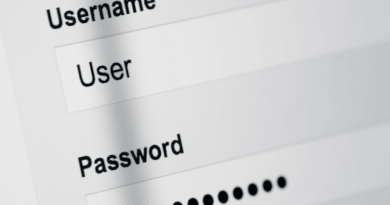Top 5 Questions & Answers To Review Before You Invest In Biometric Technology
Biometric identification technology is taking the world by storm. Increasingly, governments and businesses are entrusting identification of individuals through biometrics for safety, security and efficiency because of the technology’s unique ability to rely on physiological characteristics (who you are) instead of barcode cards, personal identification numbers (what you have) or security questions (what you know).
For those who know or recently learned about biometric technology and are contemplating it for their own needs, there are many different biometric systems (the software that stores the information, identifies the individual and powers the hardware) and modalities (the hardware itself – fingerprint readers, finger vein readers, palm vein readers, iris readers, etc.) to consider before investing. It is important to educate yourself on biometric functionality so the software and hardware that you invest in best suits your requirements.
Here are 5 questions and answers to review before you invest in biometric technology:
Question #1 – Will fingerprint biometrics work in all types of environments for all types of users?
Typically, when you hear the term “biometrics” most minds are drawn to fingerprint biometric technology. Although fingerprint biometric technology is excellent and works well in many environments, it is not a one-size-fits-all solution and may present problems when used under certain conditions. For example, if you are using biometric technology for time and attendance and your employees work with chemicals, abrasives, tools or machinery, their fingerprint integrity may be low and could present problems with fingerprint identification. Cuts, bruises, scrapes, dirt, grime and grease can all have an effect on the ability to properly scan a fingerprint.
Perhaps you live in a cold climate. Did you know that climate can have an effect on the ability to properly capture a fingerprint? Cold weather causes skin to dry up and this can also present problems capturing a quality scan on a fingerprint reader.
Age can also be a factor. Research has shown that as we get older, our skin becomes more elastic. Skin elasticity has a direct effect on fingerprint integrity so if your workforce or population using biometrics is older, you may want to think twice about using fingerprint technology.
Question #2 – What is “vascular” biometrics and how is it different from fingerprint technology?
Vascular biometric technology does not rely on fingerprints for identification purposes. Rather, it relies on capturing an image of the vein pattern beneath the finger or skin and using that image as the basis for individual identification. Unlike fingerprint technology, the integrity of the skin is not an issue with vascular biometrics. By using near infrared light to capture a finger vein or palm vein pattern beneath the skin surface to identify an individual, vascular biometrics bypasses the need to have quality fingerprints in order to successfully use a biometric identification system for 100% of your population and allows end users to use biometrics in environments that otherwise are not conducive to fingerprint technology.
In addition, vascular biometrics is an affordable alternative to fingerprint technology and provides lower false reject rates.
Question #3 – Does investing in biometric technology require winning the lottery before I purchase a system?
One of the most common misunderstandings of biometric technology is that because it is perceived as a space aged technology that was once exclusive to Sci-Fi movies (see this list of movies), it costs way too much to be considered a practical solution for modern business deployments.
The truth is that biometrics is very affordable and even though it may be a slightly more expensive initial investment when stacked against other identification technologies (barcoding, PIN’s, etc.), the long term return on investment (ROI) generally trumps any other option. It’s important to remember that investing in technology for any purpose should always be viewed through the prism of ROI – meaning, what you can achieve in the long term is usually more beneficial and should always be weighed more heavily than the short term.
Question #4 – Do biometric technologies violate an individual’s right to privacy?
There are many misconceptions about biometric technology swirling around in the news today that make it tough to discern the truth about whether or not using biometrics violates individual privacy. The bottom line is that many of these stories circulating through mainstream media, grass roots organizations, watchdog groups and institutions designed to inform the public do not understand how biometric technology really works. It’s unfortunate that these misconceptions are perpetuated by outlets that do not take the time to properly research biometric technology because it has a detrimental effect on the ability for biometrics to help businesses increase security, save money, cut down on resources consumed, boost productivity and improve efficiency (just to name a few).
I encourage you to visit this blog post we wrote last week that describes in detail how biometrics does not violate or jeopardize an individual’s privacy.
Question #5 – What are some good places to educate myself on biometrics and learn more about this technology before I make a purchase?
There are many viable biometric technology resources to educate yourself before deciding whether or not to purchase the hardware and software for their business. Here are the names and links to a few:
- www.findBiometrics.com – considered one of the top Biometric Industry resources
- www.planetbiometrics.com – also an excellent Industry Resource with an international flair
- (Shameless self promotion) www.m2sys.com: Chock full of information, case studies and blog posts that cover the broad scope of biometric technology
Have you discovered other biometric resources that are helpful to learn more? Please share them with us in the comments below.











The accuracy of fingerprint readers has increased now. It works by taking an image of your fingerprint and saving a copy of it. When you need to identify yourself, such as when logging on to a website or to Windows, the fingerprint reader scans your fingerprint and compares it to the saved version.
Pingback: Why Vascular Biometrics Is A Good Fit For Membership Management « M2SYS Blog On Biometric Technology
Pingback: Contactless Biometric Sensor Market Poised For Rapid Growth - M2SYS Blog On Biometric Technology
Pingback: The Top 5 Reasons To Consider Fujitsu PalmSecure Biometric Technology Over Fingerprint - M2SYS Blog On Biometric Technology